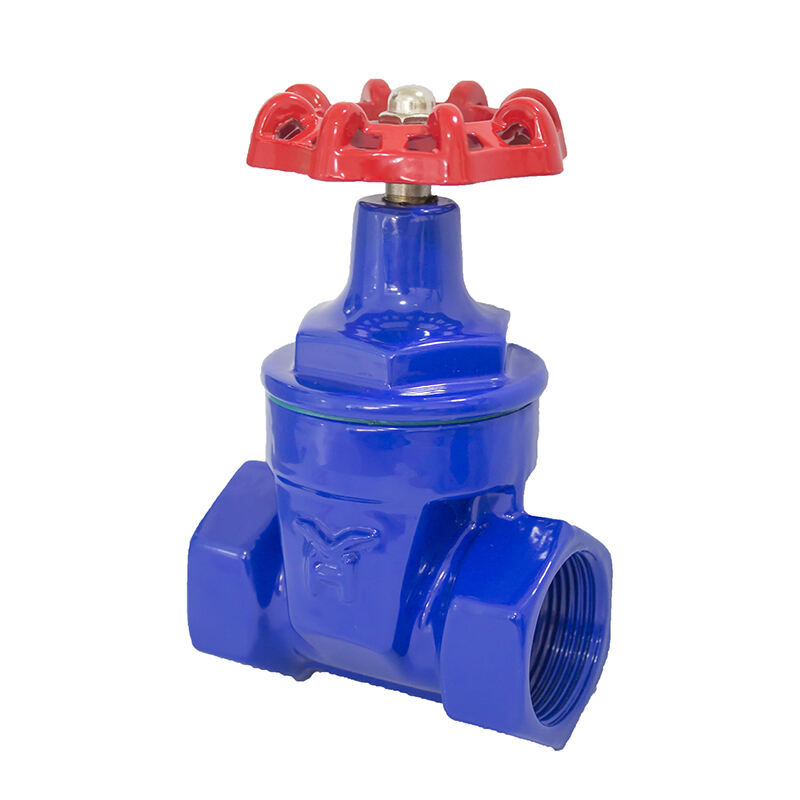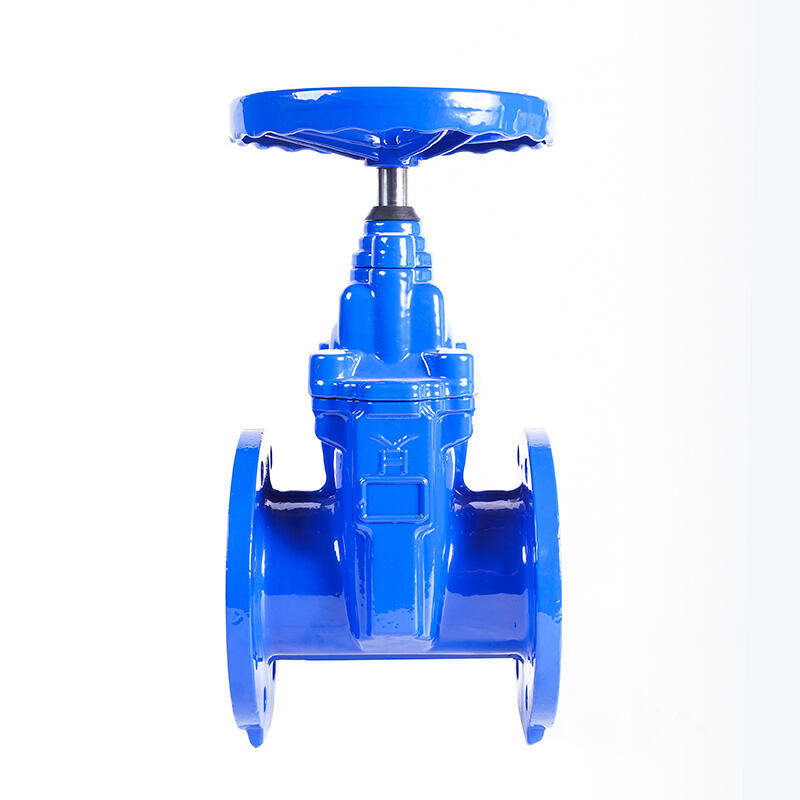গেট ভালভ ইনস্টলেশনের সাফল্যের জন্য অপরিহার্য নির্দেশাবলী
ইনস্টল করা গেট ভ্যালভস সঠিকভাবে এটি ব্যবহার করা যে কোন পাইপিং সিস্টেমের সর্বোত্তম কর্মক্ষমতা এবং দীর্ঘায়ু নিশ্চিত করার জন্য অত্যন্ত গুরুত্বপূর্ণ। আপনি শিল্প প্রতিষ্ঠান, বাণিজ্যিক ভবন, বা আবাসিক প্রকল্পে কাজ করছেন কিনা, সঠিক গেট ভালভ ইনস্টলেশন একটি নির্ভরযোগ্য সিস্টেম এবং সমস্যা দ্বারা আক্রান্ত একটি মধ্যে পার্থক্য করে তোলে। গেট ভালভ ইনস্টলেশনের মূল বিষয়গুলো বোঝা শুধু ব্যয়বহুল মেরামতই নয় বরং আপনার ভালভের অপারেটিং লাইফটাইমকেও বাড়িয়ে তোলে।
সফলভাবে গেট ভালভ ইনস্টলেশনের জন্য বিস্তারিত বিষয়ে যত্নশীল মনোযোগ, যথাযথ প্রস্তুতি এবং শিল্পের সেরা অনুশীলন মেনে চলার প্রয়োজন। প্রাথমিক পরিকল্পনা থেকে চূড়ান্ত পরীক্ষার পর্যন্ত, প্রতিটি পদক্ষেপ একটি নিরাপদ এবং দক্ষ ইনস্টলেশন অর্জনে গুরুত্বপূর্ণ ভূমিকা পালন করে যা আগামী বছরগুলিতে নির্ভরযোগ্যভাবে কাজ করবে।
প্রস্তুতি এবং পরিকল্পনা পর্যায়
সাইট মূল্যায়ন এবং সিস্টেমের প্রয়োজনীয়তা
কোনো গেট ভালভ ইনস্টলেশনের আগে, সাইটের একটি পুঙ্খানুপুঙ্খ মূল্যায়ন করা অপরিহার্য। এর মধ্যে রয়েছে অপারেটিং শর্ত, চাপের প্রয়োজনীয়তা এবং পরিবেশগত কারণগুলি যা ভালভের কার্যকারিতা প্রভাবিত করতে পারে। নির্বাচিত গেট ভালভটি সিস্টেমের স্পেসিফিকেশনগুলির সাথে মিলেছে কিনা তা যাচাই করার জন্য সময় নিন, যার মধ্যে চাপের নাম, তাপমাত্রার সীমা এবং উপাদান সামঞ্জস্য রয়েছে।
ইনস্টলেশন এবং ভবিষ্যতের রক্ষণাবেক্ষণ প্রবেশাধিকারের জন্য স্থানের প্রয়োজনীয়তা বিবেচনা করুন। অপারেটিং হ্যান্ডেল বা অ্যাকচুয়েটরগুলির জন্য যথেষ্ট ফাঁক নিশ্চিত করুন এবং কোনও প্রয়োজনীয় সমর্থন কাঠামোর জন্য পরিকল্পনা করুন। বিদ্যমান পাইপলাইনের অবস্থা নথিভুক্ত করুন এবং ইনস্টলেশন প্রক্রিয়াকে প্রভাবিত করতে পারে এমন সম্ভাব্য চ্যালেঞ্জগুলি চিহ্নিত করুন।
যন্ত্র এবং উপকরণ প্রস্তুতি
ঠিক আগে থেকে সঠিক যন্ত্র এবং উপকরণ সংগ্রহ করা গেট ভাল্ব ইনস্টলেশন প্রক্রিয়াকে সহজ করে তোলে। প্রয়োজনীয় জিনিসগুলির মধ্যে রয়েছে উপযুক্ত ওয়ারেন্চ, গ্যাসকেট, বোল্ট এবং থ্রেড সীলেন্ট। অপ্রত্যাশিত সমস্যা দেখা দিলে বিলম্ব এড়াতে হাতে ব্যাকআপ উপকরণ রাখা সাহায্য করে।
উপকরণের গুণগত নিয়ন্ত্রণ অত্যন্ত গুরুত্বপূর্ণ - ইনস্টলেশন শুরু করার আগে সমস্ত উপাদানগুলি ক্ষতি বা ত্রুটির জন্য পরীক্ষা করুন। নিশ্চিত করুন যে গ্যাসকেটগুলি সঠিক আকার এবং উপকরণের, এবং সমস্ত ফাস্টেনার স্পেসিফিকেশন পূরণ করে। উপযুক্ত প্রস্তুতি ব্যয়বহুল পুনঃকাজ প্রতিরোধ করে এবং একটি মসৃণ ইনস্টলেশন প্রক্রিয়া নিশ্চিত করে।
ইনস্টলেশন পদ্ধতির সেরা অনুশীলন
সঠিক সারিবদ্ধকরণ এবং অবস্থান
সঠিক সাজানো গেট ভাল্ব ইনস্টল করার জন্য মৌলিক শর্ত। প্রবাহের দিক এবং সিস্টেম কনফিগারেশনের সাপেক্ষে ভাল্বটি সঠিকভাবে স্থাপন করা আবশ্যিক। অনুভূমিক আকারে ইনস্টল করার জন্য যদি নির্দিষ্টভাবে ডিজাইন না করা হয়, তবে ভাল্বের স্টেম উল্লম্ব রাখুন। এই অবস্থানটি অসম ক্ষয় রোধ করতে সাহায্য করে এবং মসৃণ কার্যকারিতা নিশ্চিত করে।
চূড়ান্ত সংযোগ করার আগে ভাল্বটি স্তরের সাথে সঠিকভাবে সাজানো আছে কিনা তা নিশ্চিত করুন। সংযুক্ত পাইপগুলিতে চাপ না আনার জন্য ইনস্টলেশনের সময় ভাল্বটিকে যথাযথ সমর্থন দিন। প্রয়োজন অনুযায়ী উপযুক্ত মাউন্টিং ব্র্যাকেট বা সাপোর্ট ব্যবহার করুন।
সংযোগ এবং সীলকরণ কৌশল
সংযোগ করার সময়, টর্ক স্পেসিফিকেশন এবং শক্ত করার ধারাবাহিকতা সম্পর্কে প্রস্তুতকারকের নির্দেশনা অনুসরণ করুন। ফ্ল্যাঞ্জ সংযোগের ক্ষেত্রে, সমান চাপ বন্টন নিশ্চিত করতে বোল্টগুলি ক্রস-প্যাটার্নে শক্ত করুন। থ্রেডেড সংযোগের ক্ষেত্রে, উপযুক্ত থ্রেড সীলেন্ট ব্যবহার করুন এবং থ্রেড ক্ষতিগ্রস্ত হওয়া এড়াতে অতিরিক্ত শক্ত করা এড়িয়ে চলুন।
সীলকরণের তল এবং গ্যাস্কেট ইনস্টলেশনের প্রতি বিশেষ মনোযোগ দিন। সমস্ত যুক্ত তলগুলি ভালভাবে পরিষ্কার করুন এবং ক্ষতির জন্য পরীক্ষা করুন যা সীলকে ক্ষতিগ্রস্ত করতে পারে। ফাঁপা বা অসম হওয়া রোধ করতে গ্যাস্কেটগুলি সাবধানে ইনস্টল করুন যা ফুটো তৈরি করতে পারে।

পরীক্ষা এবং যাচাইকরণ পদ্ধতি
প্রাথমিক অপারেশন পরীক্ষা
গেট ভাল্ব ইনস্টল করার পরে, সম্পূর্ণ সিস্টেম চালু করার আগে অপারেশন পরীক্ষা সম্পন্ন করুন। ভাল্বটি কয়েকবার চক্রাকারে চালান যাতে এর পূর্ণ চলাচলের পরিসর জুড়ে মসৃণ অপারেশন নিশ্চিত হয়। অস্বাভাবিক শব্দের জন্য শুনুন এবং আটকে যাওয়া বা বাধা পরীক্ষা করুন যা ইনস্টলেশনের সমস্যা নির্দেশ করতে পারে।
স্টেমের সঠিক অপারেশন যাচাই করুন এবং নিশ্চিত করুন যে কোনও অবস্থান সূচক সঠিকভাবে সারিবদ্ধ। প্রাথমিক অপারেশনের পরে সমস্ত ফাস্টেনার কঠোর রয়েছে কিনা তা নিশ্চিত করুন। ভবিষ্যতের রেফারেন্সের জন্য রক্ষণাবেক্ষণের সময় বেসলাইন অপারেশন বৈশিষ্ট্যগুলি ডকুমেন্ট করুন।
চাপ পরীক্ষার প্রোটোকল
সিস্টেমের প্রয়োজনীয়তা এবং প্রযোজ্য মানগুলি অনুসারে চাপ পরীক্ষা পরিচালনা করুন। পূর্ণ কার্যকরী চাপে যাওয়ার আগে স্পষ্ট ফাঁস পরীক্ষা করার জন্য প্রথমে কম চাপের পরীক্ষা শুরু করুন। চাপ পরীক্ষার সময় গ্যাস্কেট এলাকা এবং স্টেম প্যাকিং-এর দিকে বিশেষ মনোযোগ দিয়ে সমস্ত সংযোগ এবং সীলগুলি পর্যবেক্ষণ করুন।
চাপের পাঠ, ধরে রাখার সময় এবং যেকোনো পর্যবেক্ষণসহ পরীক্ষার ফলাফল নথিভুক্ত করুন। যত ছোট মনে হোক না কেন, তাৎক্ষণিকভাবে যেকোনো ফাঁস বা সমস্যার সমাধান করুন। সিস্টেম যাচাই এবং ভবিষ্যতের তথ্যের জন্য পরীক্ষার পদ্ধতি এবং ফলাফলের উপযুক্ত ডকুমেন্টেশন অপরিহার্য।
মেন্টেনেন্স এবং দীর্ঘমেয়াদি দেখাশোনা
নিয়মিত পরিদর্শনের সময়সূচী
অপারেটিং শর্ত এবং ভাল্ভের গুরুত্বের উপর ভিত্তি করে একটি নিয়মিত পরিদর্শনের সময়সূচী প্রতিষ্ঠা করুন। বাহ্যিক উপাদানগুলির দৃশ্যমান পরিদর্শন অন্তর্ভুক্ত করুন, ক্ষয় বা ক্ষতির লক্ষণগুলি পরীক্ষা করুন। নিয়মিত স্টেম লুব্রিকেশন এবং প্যাকিং সমন্বয় রক্ষণাবেক্ষণের রুটিনের অংশ হওয়া উচিত।
সমস্ত পরিদর্শন এবং রক্ষণাবেক্ষণ ক্রিয়াকলাপের বিস্তারিত রেকর্ড রাখুন। এই নথিভুক্তি সময়ের সাথে সাথে ভালভের কর্মক্ষমতা ট্র্যাক করতে সাহায্য করে এবং গুরুতর সমস্যায় পরিণত হওয়ার আগেই উদীয়মান সমস্যাগুলি চিহ্নিত করতে পারে।
প্রতিরোধী রক্ষণাবেক্ষণের পদক্ষেপ
ভালভের আয়ু বাড়ানোর জন্য এবং সর্বোত্তম কর্মক্ষমতা বজায় রাখার জন্য অগ্রহণযোগ্য রক্ষণাবেক্ষণ পদ্ধতি প্রয়োগ করুন। এর মধ্যে নিয়মিত পরিষ্কার, চলমান অংশগুলির লুব্রিকেশন এবং ভালভ অপারেশনের পর্যায়ক্রমিক পরীক্ষা অন্তর্ভুক্ত রয়েছে। আরও গুরুতর সমস্যা প্রতিরোধ করতে ক্ষয় বা অবনতির যে কোনও লক্ষণ তৎক্ষণাৎ সমাধান করুন।
অপারেটর এবং রক্ষণাবেক্ষণ কর্মীদের সঠিক ভালভ অপারেশন এবং মৌলিক সমস্যা সমাধানে প্রশিক্ষণ দিন। স্বাভাবিক অপারেটিং বৈশিষ্ট্য বোঝা কর্মীদের সম্ভাব্য সমস্যাগুলি তাড়াতাড়ি চিহ্নিত করতে সাহায্য করে যখন তা সংশোধন করা সহজ।
সাধারণ ইনস্টলেশনের চ্যালেঞ্জ এবং সমাধান
স্পেস সীমাবদ্ধতা ব্যবস্থাপনা
গেট ভাল্ব ইনস্টল করার সময় সীমিত ইনস্টলেশন জায়গা প্রায়শই চ্যালেঞ্জ তৈরি করে। বিশেষ যন্ত্র বা পরিবর্তিত ইনস্টলেশন পদ্ধতি ব্যবহার করা এমন সৃজনশীল সমাধান হতে পারে। কম জায়গাতেও অপারেশন এবং রক্ষণাবেক্ষণের জন্য প্রয়োজনীয় ফাঁক বজায় রাখুন।
জায়গার সীমাবদ্ধতা মোকাবেলা করার সময়, বিকল্প ভাল্ব কনফিগারেশন বা মাউন্টিং ব্যবস্থা বিবেচনা করুন যা উপলব্ধ জায়গার সাথে ভালোভাবে খাপ খাইয়ে নেবে এবং সঠিক কার্যকারিতা ও অ্যাক্সেসযোগ্যতা বজায় রাখবে।
পরিবেশগত বিবেচনা
পরিবেশগত উপাদানগুলি গেট ভাল্বের ইনস্টলেশন এবং কর্মক্ষমতাকে উল্লেখযোগ্যভাবে প্রভাবিত করতে পারে। আবহাওয়ার উপাদান থেকে সুরক্ষা বিবেচনা করুন, যার মধ্যে উপযুক্ত কোটিং বা কভার অন্তর্ভুক্ত থাকবে, যদি ইনস্টলেশন খোলা আকাশের নিচে হয়। ক্ষয়কারী পরিবেশে, দীর্ঘমেয়াদী নির্ভরযোগ্যতা নিশ্চিত করার জন্য উপযুক্ত উপকরণ এবং সুরক্ষামূলক ব্যবস্থা নির্বাচন করুন।
তাপমাত্রার পরিবর্তন এবং ইউভি বিকিরণের সংস্পর্শে যাওয়া ভাল্ভের উপাদান এবং সীলক উপকরণগুলিকে প্রভাবিত করতে পারে। ইনস্টলেশনের সময় এই বিষয়গুলি বিবেচনায় নিন এবং ভাল্ভের আয়ু সর্বাধিক করতে উপযুক্ত সুরক্ষা ব্যবস্থা গ্রহণ করুন।
প্রায়শই জিজ্ঞাসিত প্রশ্নাবলী
ইনস্টলেশনের পরে গেট ভাল্ভগুলি কত ঘন ঘন চালানো উচিত?
আটকে যাওয়া রোধ করতে এবং মসৃণ কার্যকারিতা নিশ্চিত করতে গেট ভাল্ভগুলি (সম্পূর্ণ খোলা এবং বন্ধ করা) অন্তত ত্রৈমাসিক ভাবে চালানো উচিত। তবে কঠোর পরিবেশ বা গুরুত্বপূর্ণ অ্যাপ্লিকেশনের ক্ষেত্রে এই ফ্রিকোয়েন্সি বাড়ানোর প্রয়োজন হতে পারে। নিয়মিত চালনা সঠিক কার্যকারিতা বজায় রাখতে সাহায্য করে এবং সম্ভাব্য সমস্যাগুলি আগে থেকেই চিহ্নিত করে।
অনুপযুক্ত গেট ভাল্ভ ইনস্টলেশনের লক্ষণগুলি কী কী?
এর মধ্যে রয়েছে কঠিন অপারেশন, স্টেম বা ফ্ল্যাঞ্জের চারপাশে ক্ষতিগ্রস্ত হওয়া, অপারেশনের সময় অস্বাভাবিক শব্দ এবং অসম ক্ষয়ের ছাঁচ। আপনি যদি এই সূচকগুলির মধ্যে কোনওটি লক্ষ্য করেন, তবে আরও ক্ষতি রোধ করতে তৎক্ষণাৎ পরীক্ষা এবং সংশোধন করা প্রয়োজন।
আমি কীভাবে আমার ইনস্টল করা গেট ভাল্ভগুলির আয়ু বাড়াতে পারি?
গেট ভাল্বের আয়ু সর্বাধিক করতে, সঠিক ইনস্টলেশন নিশ্চিত করুন, নিয়মিত পরিদর্শন এবং রক্ষণাবেক্ষণের সময়সূচী মেনে চলুন, উপযুক্ত লুব্রিকেন্ট ব্যবহার করুন, পরিবেশগত ক্ষতি থেকে সুরক্ষা দিন এবং যেকোনো সমস্যা তৎক্ষণাৎ সমাধান করুন। রক্ষণাবেক্ষণের কার্যকলাপগুলির সঠিক ডকুমেন্টেশনও সময়ের সাথে সাথে ভাল্বের অবস্থা ট্র্যাক করতে সাহায্য করে।

